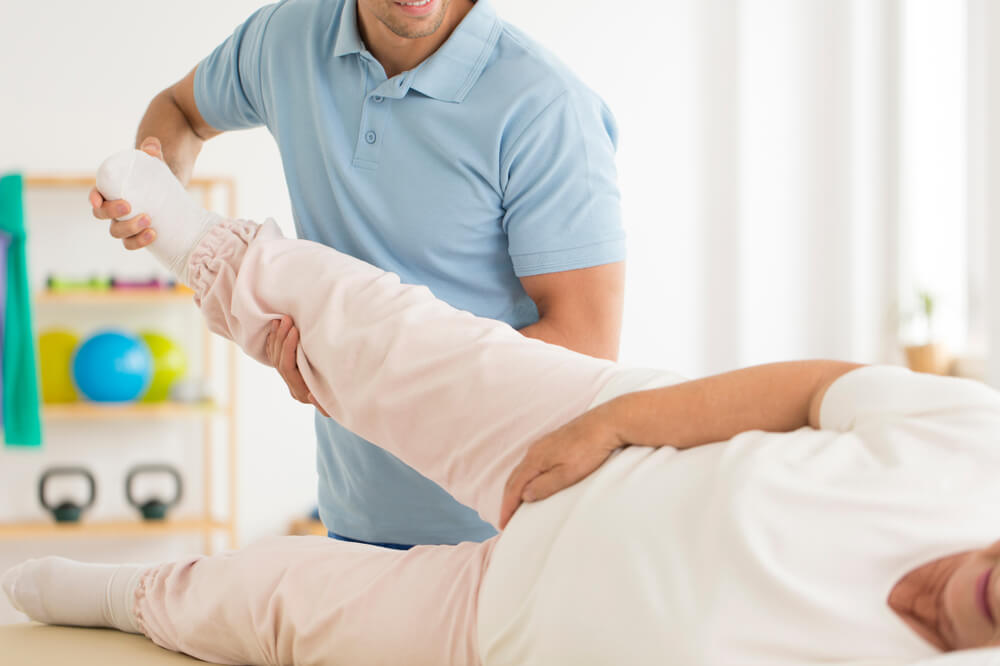Running or walking with poor form. Lifting heavy weights repeatedly with your legs. Weakness in your thigh or glute muscles. These are all factors that can lead to hip bursa pain or hip bursitis.
Bursae are small, fluid-filled sacs that reduce friction between muscles and bones. One place where you can find these structures are in your hip, and hip bursitis can result if your hip bursae become inflamed. It’s estimated that 2 in every 1,000 people develop hip bursitis yearly.
Physical therapists can help you find therapeutic exercises to reduce your hip bursa pain and strengthen the muscles that support the hips. Here are two exercises your therapist could use to accomplish these goals:
- Lying lateral leg raises
One exercise your therapist may have you perform to reduce hip bursa pain is the lying lateral leg raise exercise. This movement is helpful because it’s intended to help strengthen many muscles that support your hips. Some of the muscles targeted by this exercise include the gluteus medius, gluteus minimus and quadriceps.
How to do the lying lateral leg raise exercise
- Lie down on a yoga mat or mattress so that your affected hip is facing the ceiling.
- Slowly lift your leg up as far as you can. Keep your toes pointed to the front and your leg as straight as possible.
- Hold at the top of the movement for two or three seconds.
- Slowly lower your leg back down until it’s resting on your other leg.
- Continue to raise and lower your leg until you’ve done 15 to 20 repetitions.
- Take a short break to rest your leg, and then repeat the exercise until you’ve completed three or four sets of 15 to 20 reps.
- Lying leg circles
Another exercise physical therapists often use to help people with hip bursa pain is lying leg circles. This exercise can be tweaked to fit people in various stages of recovery, and it can also help improve strength in muscles like the hip flexors, quadriceps and gluteal muscles.
How to do lying leg circles
- Lie down flat on your back on the floor or a mattress.
- Straighten the affected leg as much as possible and lift it about 3 inches off the floor.
- Do five small circles to the left, and then do five small circles to the right. You can increase the difficulty by making the circles bigger.
- Lower your leg back down and take a short break.
- Repeat these steps until you’ve completed them three or four times.
Advent Physical Therapy offers treatment for hip bursa pain
Besides exercises, there are other ways that physical therapists can help treat your hip bursa pain. Our team at Advent PT is ready and willing to help you learn all about our treatment options for this type of pain. We offer free screenings that can confirm that your hip bursa is the source of your discomfort. Also, our therapists are adept at building unique therapy plans that can include techniques like:
- Therapeutic exercises
- Joint mobilization
- Instrument-assisted soft tissue mobilization (IASTM)
- Dry needling
- Virtual therapy
- At-home care
Contact our team today for more information about how we can help treat your hip bursitis symptoms or to schedule an initial appointment.
